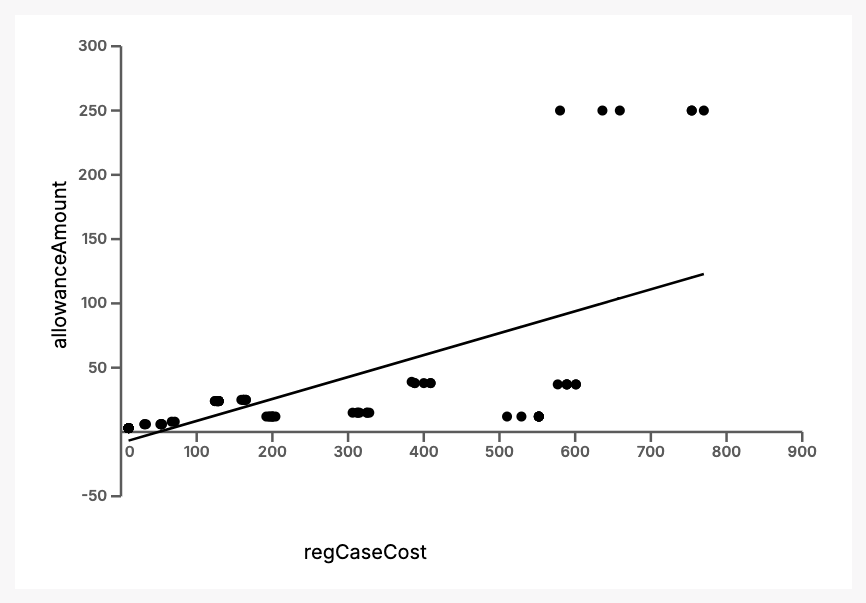TensorFlow in ExpressJS Part II
This post continues describing a presentation I gave for my development team on Neural Networks and TensorFlow. Please read Part 1 first.
The second use-case I created was a model for simple plain-language search prediction. The idea I had was that a user could use a search input for the sales allowance reporting tool my team had built. The tool shows users the changes in sales allowances on ad campaigns, and it outputs those reports in a variety of formats depending on what the user needs. A language model might help users find the report type they want.
I had the team send me many different terms and phrases that users might use to find reports in the tool. I compiled all of these into about a hundred different text prompts and assigned each to a corresponding report type as its "intent". This array of prompts and intents became a rudimentary training data set for the model.
For this NN, I set up three nodes in TensorFlow, each with 4 inputs to represent 4 different report types that could be predicted. Once again I used a linear regression loss function and the Adam optimizer to compile the model. The unique part about this model compared to my first example was that I used TensorFlow's Universal Sentence Encoder to create the embeddings for the language model. I was surprised by how easy this was to implement. I just loaded the USE and used the models `embed` method to feed it all of the test prompt data.
With the NN set up and the model trained, I could now feed the endpoint a prompt and TensorFlow would return a set of 4 float values, 0 to 1. Each number corresponded to a report type, and its value was the percent likelihood that the prompt was intended for that report. With some simple TypeScript logic, the endpoint would return a URL for the report type with its value closest to 100%.
My hope was that the team understood how TensorFlow streamlines the setup of a NN and model training for language models, and how we could apply this to real-world use-cases going forward.
To end my presentation, I wanted to help them see visually what TensorFlow was doing, and what some bigger possibilities could be. I found a really cool tool called TensorFlow's Embedding Projector. It uses a 3D visualizer to display data points and correlation in several examples of ML models. A couple examples I used for my presentation were Word2Vec All (showing correlation between words), and Mnist with images (showing how handwritten numbers correlate to actual number values).
I set up a repo for the presentation materials I used here:
